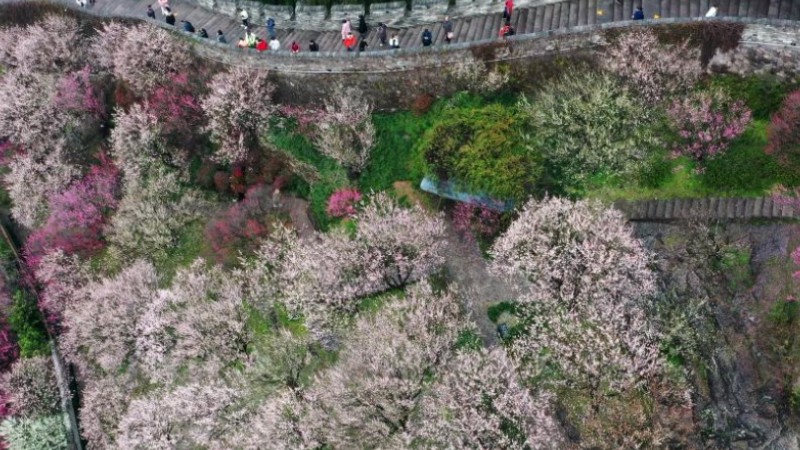Feature: Joyful anticipation of Tibetan New Year ignites festive vibes
LHASA, Feb. 13 (Xinhua) -- The Spring Festival celebrations may have come to a close in most parts of China, but people of the Tibetan ethnic group in the southwestern regions are buzzing with excitement as they prepare for their most grandiose celebration of the year -- the Tibetan New Year.
In a bustling market in the heart of Lhasa, the regional capital of Tibet Autonomous Region, Migyur's bakery hums with activity.
Ten expert bakers are lined up, gently stretching soft dough into shape. With a practiced hand, they fry each piece in melted butter until it turns a beautiful golden hue, creating the delectable treat called Kasai, a traditional Tibetan pastry of the New Year.
"We've been making Kasai for 17 years. Our products sell well as they're freshly prepared with quality ingredients," said Migyur, 40, whose shop can sell hundreds of kilos of Kasai a day.
The 2023 Tibetan New Year falls on Feb. 21 this year, almost a month after the Spring Festival. The celebration usually starts on the first day of the first month of the Tibetan calendar and ends after 15 days. Just like the Spring Festival, the Tibetan New Year marks the perfect opportunity for Tibetans to reunite with their relatives and friends.
The bustling market fairs are a defining feature of the Tibetan New Year celebrations, offering a dazzling array of delights for visitors to savor. From snacks and fruits, to nuts and dried yak meat sourced from near and far, the streets come alive with a cornucopia of flavors and aromas.
Having just sold a hefty 2,000 kg of chili and walnut, Dorje, a vendor from Nyingchi, is eager to indulge in some personal New Year shopping and partake in the joyous spirit of the festive season before making his way home.
"I've been in Tibet for more than 20 years. Red dates, raisins, almonds, and dried persimmons are essential goods for the Tibetan New Year," said Wang Ximu, a confectionery vendor.
The bustling scene is a result of decades of efforts in promoting rural development in the sparsely-populated Tibetan regions. In recent years, more investment has been injected to boost the construction of characteristic agricultural bases, specializing in yaks, Tibetan pigs and vegetables, to help increase the income of locals.
Today, the market fairs of Lhasa have become a shining representation of the region's unique offerings, serving as a road to prosperity for many in the Tibetan areas. During major festivities, such as the Tibetan New Year, these fairs take on an even greater significance, as they provide an opportunity for vendors to promote their products.
Tourism has been picking up rapidly in recent months, propelled by the Spring Festival and Tibetan New Year holidays.
Take Lhasa for instance, official data shows during the week-long Spring Festival holiday, it received 287,000 tourist arrivals, up 18.84 percent year on year, and the tourism revenue hit 285 million yuan (about 42 million U.S. dollars), an increase of 15.85 percent from the same holiday period in the previous year.
Wangmo is beaming with delight, her arms clasped around a bundle of freshly purchased spring festival couplets. The joyous atmosphere of the market, combined with the excitement of the approaching festivities, has put her in a cheerful mood.
"The act of pasting the auspicious spring couplets to usher in the Year of the Water Rabbit under the Tibetan calendar is nothing but joyful. I wish a prosperous year, both for the families and the motherland," she said.
Photos
Related Stories
Copyright © 2023 People's Daily Online. All Rights Reserved.









